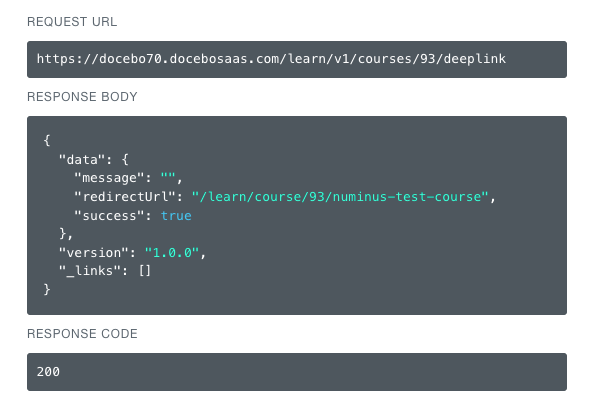We are trying to create a url that a user can select to view a course. The user should not need to be enrolled in the course in order to view the course. We are currently using the Docebo deeplink from the course to create the url,
example url - 'https://xxxx.docebosaas.com/learn/course/568/Week Two - Rep Onboarding?hash=abc12345'. This works for Superadmins regardless of whether or not they are enrolled in the course. For non Superadmins, you need to be enrolled in the course in order for the link to work. Non Superadmins receive a 403 error when selecting the link. We have noticed that if you generate a sharable link from Docebo a non Superadmin can successfully view the course.
A Docebo sharable link has this format 'https://xxxx.docebosaas.com/learn/course/568/Week Two - Rep Onboarding?generated_by=12345&hash=xyz98765'. We need to be able to generate the Docebo sharable link programmatically.
I discovered the Docebo api '/learn/v1/courses/{course_id}/deeplink', it looks like this may work. Has anyone had experience using this api call? Does anyone have other suggestions/ideas?
Thank you,
Alan O’Dannel








